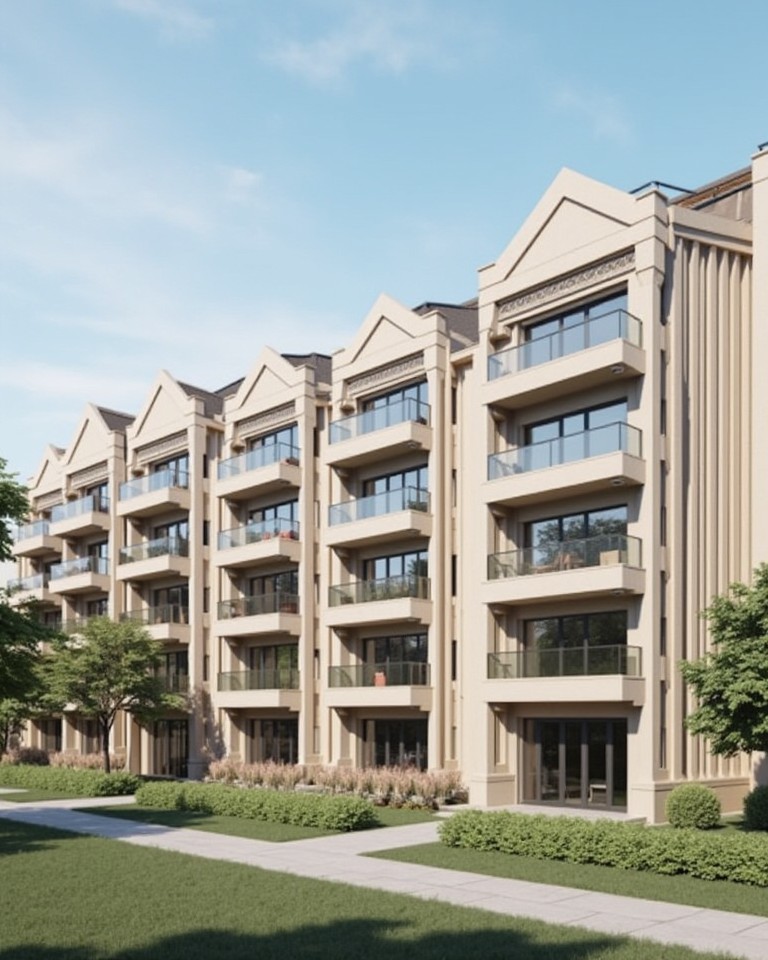As cities expand and populations grow, the way we live continues to evolve. One of the core pillars of real estate development is housing typology—the classification of homes based on their structure, layout, density, and function. From compact urban apartments to spacious standalone homes, each housing typology serves a specific purpose and target demographic.
Understanding these typologies is crucial not only for homebuyers and renters, but also for developers, urban planners, and investors aiming to create sustainable, livable communities. Here’s an in-depth look at the most common housing typologies and what makes each unique.
1. Bedsitters and Studio Apartments
Typology Focus: Compact Urban Living
Overview:
These are small, self-contained units combining a bedroom, living space, and kitchenette into a single room, with a separate bathroom.
Best For: Students, single professionals, or low-income earners in urban settings.
Key Traits:
- Highly affordable and easy to maintain
- Perfect for high-density development
- Usually found near transport nodes and universities
Challenges: Limited privacy and space.
2. One- to Three-Bedroom Apartments (Flats)
Typology Focus: Mid-Density Multi-Unit Housing
Overview:
These are self-contained units within multi-story buildings, each with private living spaces and access to shared amenities like staircases, lifts, or parking.
Best For: Small families, professionals, or investors in urban areas.
Key Traits:
- Efficient land use and relatively low cost
- Rental income potential is high
- Can include luxurious options like penthouses in upscale areas
Challenges: Shared walls and noise, limited outdoor space.
3. Maisonettes
Typology Focus: Split-Level Family Living
Overview:
Maisonettes are typically double-storey houses with bedrooms upstairs and living areas on the ground floor. They may be standalone or semi-attached.
Best For: Middle- to high-income families seeking more space and privacy.
Key Traits:
- Separate floors create functional zoning (e.g., quiet upstairs, active downstairs)
- Private compound and parking
- Often found in gated estates or suburban areas
Challenges: Higher cost and not ideal for elderly or disabled occupants.
4. Bungalows
Typology Focus: Single-Storey Comfort
Overview:
Detached, ground-level homes that emphasize easy accessibility and open living.
Best For: Retirees, individuals with mobility needs, or families preferring ground-floor living.
Key Traits:
- Simple layout and easier mobility
- Can accommodate large yards
- High resale value in suburban or rural areas
Challenges: Requires larger land parcels, which can be expensive in cities.
5. Townhouses and Row Houses
Typology Focus: Compact Family Housing in Rows
Overview:
These are multi-floor homes built in rows, often sharing side walls but with individual entrances and small yards.
Best For: Families seeking a blend of affordability and autonomy.
Key Traits:
- Lower land cost due to shared walls
- Often located in well-planned gated communities
- Good balance of privacy and affordability
Challenges: Less privacy than detached homes and limited expansion.
6. Semi-Detached Homes
Typology Focus: Twin Family Living
Overview:
Two houses built side by side, sharing one wall. Each home sits on its own plot.
Best For: Homeowners who want some privacy without full detachment costs.
Key Traits:
- Lower construction costs than standalone homes
- Good compromise between townhouses and bungalows
- Often found in suburban or peri-urban areas
Challenges: Shared wall may reduce sound privacy.
7. Detached Homes
Typology Focus: High-End Family Housing
Overview:
Fully independent houses, often with front and back yards, built on private plots.
Best For: Affluent homeowners, large families, or luxury home seekers.
Key Traits:
- Maximum privacy and design freedom
- More space indoors and outdoors
- Popular in leafy suburbs and gated communities
Challenges: High land and maintenance costs.
8. Gated Communities
Typology Focus: Controlled-Access Estate Living
Overview:
Comprise multiple housing units (maisonettes, townhouses, or apartments) within a secure, fenced estate with shared amenities like playgrounds and clubhouses.
Best For: Families, professionals, and retirees who prioritize safety and community living.
Key Traits:
- 24/7 security and shared recreational spaces
- Unified architectural design
- High market appeal and resale value
Challenges: Monthly service charges and strict homeowner association rules.
9. Mixed-Use Developments
Typology Focus: Urban Live-Work-Play Spaces
Overview:
Blends residential units with commercial, office, or retail spaces in one development.
Best For: City dwellers who value walkability and convenience.
Key Traits:
- Vibrant, all-in-one living environments
- Great for reducing commute times
- High demand in metropolitan hubs
Challenges: High noise levels, parking challenges, and complex management.
Choosing the Right Housing Typology
Whether you’re buying your first home, renting, or investing, understanding housing typologies can help you make more informed decisions. The best option depends on your lifestyle, budget, location preferences, and long-term goals.
For developers and urban planners, the key lies in offering a diverse housing mix to accommodate various needs , from single professionals and growing families to retirees and investors , while considering infrastructure, density, and livability.

